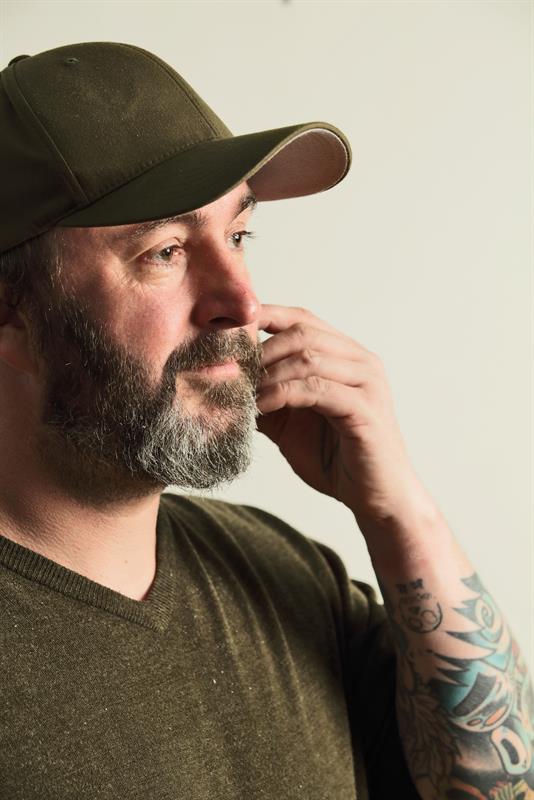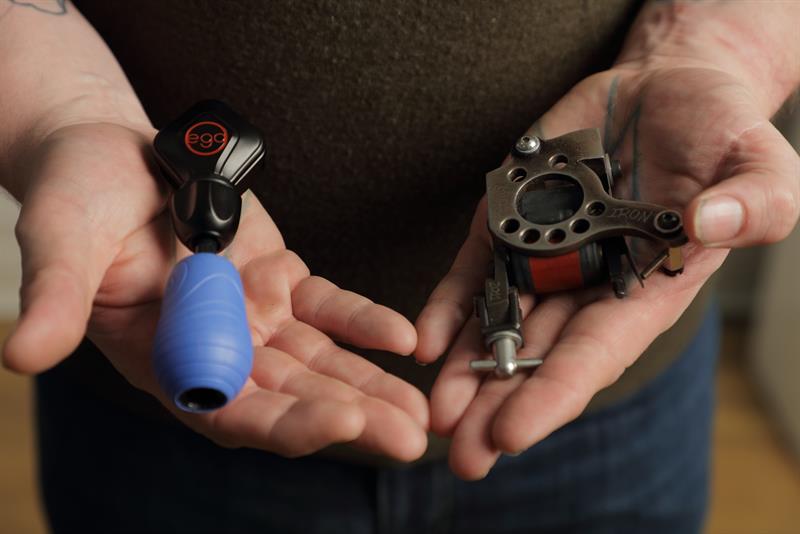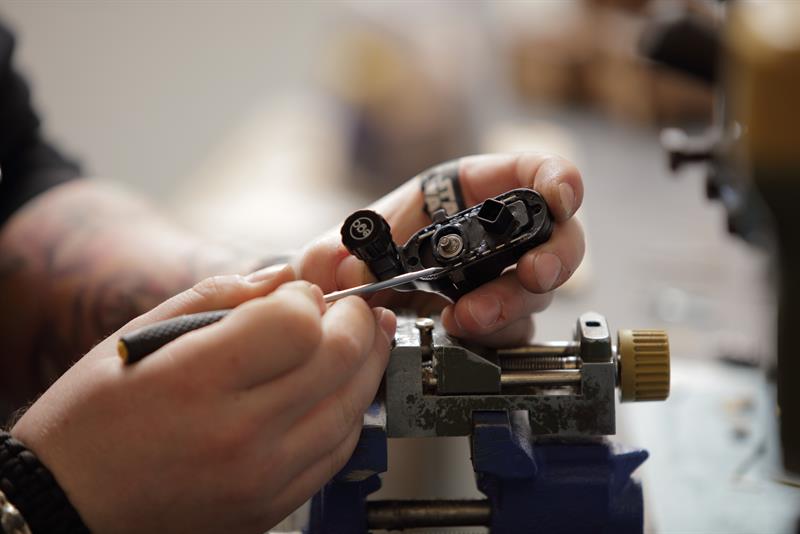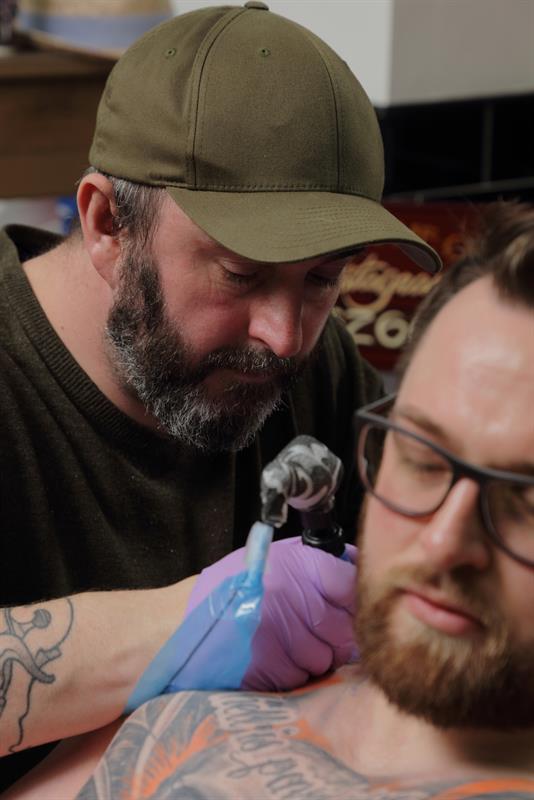“The tattooists might complain, but the customers are the general public,” states Bez. “Downstairs is designed not to look intimidating.”
This desire to make the process of getting a tattoo as stress-free as possible was one of the reasons Bez decided to redesign the humble tattoo machine, which has remained largely unchanged for decades.
His path to this point has been slightly unorthodox: Bez left school at 16 and got into video game design working in the US and the UK on games like Destruction Derby, Testdrive and Need For Speed.
Boredom set in and he took up a tattooing course, knowing nothing about it and only having one tattoo himself. The course wasn’t teaching him anything, so he bought himself a tattooing kit and started teaching himself.
He is now a multi-award-winning tattoo artist with clients who travel from across the globe to get one of his designs inked into their skin. However, in recent years he’s begun to get itchy feet again and has taken up engineering as a hobby alongside tattooing. And, just as tattooing took over from his design work on computer games, engineering is now taking him away from tattooing.
“Computer games moved to 3D graphics, and I still kept my hand in with the software, ‘cause I’m a geek,” Bez jokes. “A lot of the stuff that I did was on software like Maya, building up 3D stuff. I tried to get it as near as I could to CAD.”
Bez’s brainchild is the Ego range of lightweight tattoo machines which he designs on Autodesk’s Fusion CAD software. Whereas the majority of traditional tattoo machines are predominantly made from cast iron, stainless steel, copper, brass or bronze components, the Ego machines are predominantly aluminium or plastic, drastically reducing their weight by over 50%.
Despite a desire to keep all aspects of production in the UK, especially in the North-East, the CNC machining is currently done in China. This decision was made because the British company Bez was using was getting the parts produced in China anyway, so it made sense to cut out the middle man and go straight to the source.

The Ego machines use miniature brushless motors from Faulhaber and igus’ maintenance free bearing and linear slides to drive the bar the needles are attached to, and rubber inserts instead of springs. This means that the products are much more compact than traditional machines. This all adds up to not only greater ease of use for tattoo artists, but also reduces long-term injuries caused by repetitive strain and vibration such as carpal tunnel and vibration white finger (VWF).
However, Bez’s background in computer game design has caused some difficulties when it comes to the manufacture of the units: “Everything I do looks very sci-fi. For example, the Apex Overkill; I just designed something that looked like a Cylon (from Battlestar Galactica) because I’m so used to designing spaceships for computer games. Looking back now, I must have caused so many headaches.”

With the help of igus, vibration has been massively reduced. Instead of the needle arm being attached off-centre, directly to a cam to move the needle up and down, the Ego machines feature a centrally spinning cam with a bearing attached off-centre, which pushes a frame up and down a set of rails to whichthe needle arm is attached, converting rotary motion into linear motion. This solution does away with inefficient lateral movement of the needle which creates the vibrations that can lead to injuries and fatigue.
“Bez has really made a miniature linear carriage that turns circular motion into linear motion using iglidur J4, one of our standard grades that is optimised for linear motion,” explains Matthew Aldridge, managing director of igus UK. “Interestingly, it’s also one that we use for rotational motion for high-speed applications. It’s perfect for what he’s doing.”

The Ego range includes five separate models to suit various needs.
The engineering bug has bitten Bez who is now looking to move away from tattooing altogether. He is moving the workshop out of the cramped top floor of Triplesix Studios to a separate facility, also in Sunderland, that he wants to make into a kind of maker space called ‘The Hive’.
“I still enjoy tattooing, but I feel like I’ve done it now. I’ll always do it because it’s fun but it’s not my passion any more, my passion has always been creating things. And what I find about being creative is I need to be left alone, and downstairs I’m never left alone.So, that’s why we’re moving.”
Bez has already created pencil grips for people with trouble gripping, he says: “I think Apple has probably sold more iPads to tattooists than anyone else – they use it to do stencils – but the pencil is very sleek, so we designed a rubber grip that goes around the pencil in loads of different styles.”
However, the grips have also been taken up by dentists.
As well as coming up with ideas and solutions himself, the aim of The Hive is to create a hub where various companies and inventors can pool their ideas and technologies to collaborate on prototypes for different sectors.
“I was crutch-bound for 15 weeks [after a sporting accident] and crutches are horrible, so that’s one of the ideas I’ve been thinking about,” Bez explains. “I think because I don’t have an engineering background it really helps to look at things differently.”





